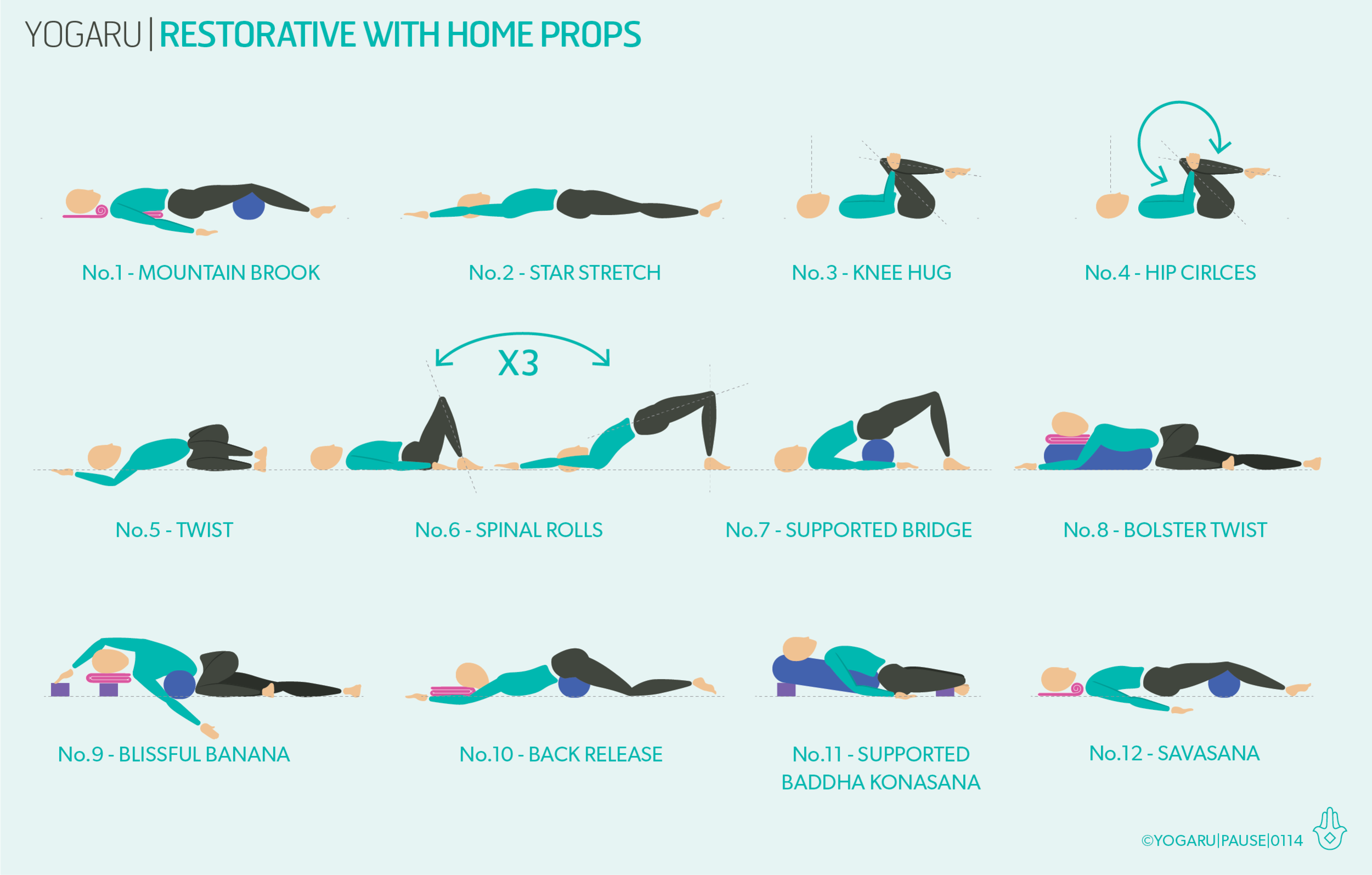MEDITATIVE FLOW
The Moon Salutation, also known in Sanskrit as Chandra Namaskara, is a mini sequence of poses similar to the more commonly practised Sun Salutation (Surya Namaskara). The Sun Salutation was originally designed for a morning practice to create heat and energy and the Moon Salutation was created to practice in the evening as a cooling and calming end to the day. Both can be practised anytime of the day depending on what you are looking for from your practice. They both stretch and strengthen all the muscle groups, increase circulation, build a strong respiratory, aid the digestive system, boost the immune system, unwind a busy mind and release physical and mental tension. But if you are in need of a more invigorating energy boost head to the Sun Salutation and if you are feeling stressed and depleted look to the more soothing version of the Moon Salutation.
The Moon Salutation is a very symmetrical and balanced flow. You move through the first half of the sequence focusing on the right side of the body, come to a central symmetrical pose and flow back to the starting position focusing on the left side of the body, reversing the order of the poses as you go. The repetitive and meditative quality of the sequence of movements relaxes the mind and body, reducing stress and anxiety. Each pose is linked with an in-breath or an out-breath, helping you to connect to the breath and its many benefits.
EXPLORING MOON SALUTATION IN YOUR PRACTICE
The Moon Salutation can be practiced as part of your practice or repeated as your full practice with as many rounds as feel good to you. As you move through the poses use the transitions from pose to pose as an opportunity to thread the poses together and cultivate a flowing breath. Move with fluidity and length through your limbs to make the transitions as beneficial as the poses themselves.
You can also practice this sequence with my on YouTube.
Start standing in the centre of your mat facing the long side. Hands in prayer position at your hearts and take a few slow meditative breaths.
Step 1 - Inhale, reach your arms up high. Palms together arms reaching. Lengthen through the whole spine.
Step 2 - Exhale, hinged to the right, press into your left foot and feel the stretch through the whole left side of the body.
Step 3 - Inhale back to centre and lengthen.
Step 4 - Exhale, hinge to the left, press into your right foot and feel the stretch through the whole right side of the body
Step 5 - Inhale, back to centre.
Step 6 - Exhale, step your feet wide apart, feet turned out, bend your knees and lower your hips down, stack your knees over your ankles, thighs working towards being parallel to the ground. Tailbone reaches down, hip bones reach up. Arms in cactus position.
Step 7 - Inhale, straighten your right leg and pivot your right foot forward and your left foot to a 45 degree angle. Reach the arms out at shoulder height.
Step 8 - Exhale, hinge to your right from the hip joint. Place your hand on your shin or the ground inside/outside your right foot. Bottom waist rolls forward, top waist rolls back, reach your left arm up, palm facing left, gaze to your left fingertips.
Step 9 - Inhale, pivot your hips round to the front of your mat, hinge forward from the hip joint over your right leg, hips level, right hip draws back, left hip draws forward. Reach the chest forward, fold forward, release your head towards the front leg, keep the legs firm.
Step 10 - Exhale, bend the right leg and lift the left heel up, firm your back leg, hug your outer hips to the midline, press into your feet and scissors them towards each other. Broaden through your collarbones, lengthen through your spine to the tip of your crown, draw your sternum forward and up.
Step 11 - Inhale, place the left knee on the ground, hug your outer hips to the midline, reach your arm up high palms pressing together. Draw your navel towards your spine, broaden through the collarbones, lengthen through your spine to the tip of your crown.
Step 12 - Exhale, place both hands on the ground inside your right leg and pivot your hips around to the side of your mat. Press into both feet, keep your right knee over your right ankle. Squeeze into the back of the hips to open your inner groin.
Step 13 - Inhale, bend both knees and sit your hips down into a deep squat. Press your elbows against your thighs, hug your outer hips to the midline, let your pelvis become heavy down towards the back of your heels. Lift your inner arches and inner ankles. Broaden through the collarbones, lengthen through your spine to the tip of your crown.
On your next exhale pivot around to the back of the mat with your hands on the ground inside your left leg for wide legged low lunge on the left side. Move through the steps on the left side in reverse from Step 12 to Step 1 until you reach Tadasana.
To save the images for personal use click and hold down the image until the ‘save image’ option appears; on Mac hold down ‘control’ and click the image to get the option box; on PC right click on the image to get the option box. Scroll down in the ‘option box’ and click ‘save image’.
Ruth Delahunty Yogaru




